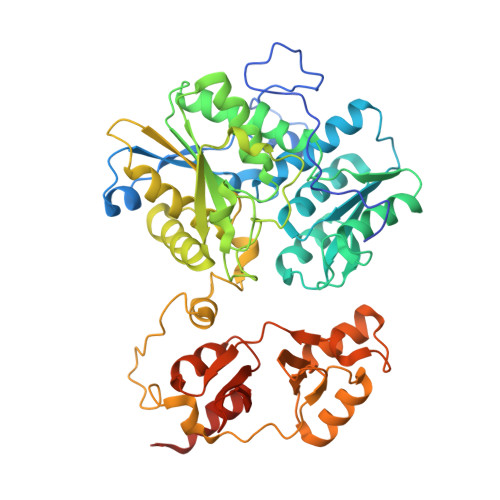Structural basis for substrate activation and regulation by cystathionine beta-synthase (CBS) domains in cystathionine {beta}-synthase.
Koutmos, M., Kabil, O., Smith, J.L., Banerjee, R.(2010) Proc Natl Acad Sci U S A 107: 20958-20963
- PubMed: 21081698
- DOI: https://doi.org/10.1073/pnas.1011448107
- Primary Citation of Related Structures:
3PC2, 3PC3, 3PC4 - PubMed Abstract:
The catalytic potential for H(2)S biogenesis and homocysteine clearance converge at the active site of cystathionine β-synthase (CBS), a pyridoxal phosphate-dependent enzyme. CBS catalyzes β-replacement reactions of either serine or cysteine by homocysteine to give cystathionine and water or H(2)S, respectively. In this study, high-resolution structures of the full-length enzyme from Drosophila in which a carbanion (1.70 Å) and an aminoacrylate intermediate (1.55 Å) have been captured are reported. Electrostatic stabilization of the zwitterionic carbanion intermediate is afforded by the close positioning of an active site lysine residue that is initially used for Schiff base formation in the internal aldimine and later as a general base. Additional stabilizing interactions between active site residues and the catalytic intermediates are observed. Furthermore, the structure of the regulatory "energy-sensing" CBS domains, named after this protein, suggests a mechanism for allosteric activation by S-adenosylmethionine.
Organizational Affiliation:
Department of Biological Chemistry and the Life Sciences Institute, University of Michigan Medical Center, Ann Arbor, MI 48109-5606, USA.
















